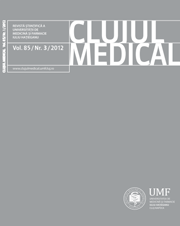Pre-transplantation Assessment of the Living Donor
Keywords:
kidney, renal transplantation, living donorAbstract
The first transplant was performed in 1951 and since then living donor transplantation has grown in importance as a solution for patients with End-Stage Renal Disease (ESRD).
Renal transplantation is a life-saving procedure. Living donor grafts have a better survival and a better quality then cadaveric grafts. The morbidity and mortality on waiting-lists are strongly correlated with the time of dialysis and cardiovascular morbidity is one of the most important mortality factors in ESRD. Another very important advantage of living donor transplantation is the possibility of programming which means that it can be performed with a higher frequency then a transplant from cadaveric donors. All these help reduce the waiting lists, which means less time on dialysis for the patients and even performing pre-emptive transplantation.
The states with the most important living transplant programmes have the highest rates of transplantation and the shortest waiting-lists.
In order to perform a living transplantation, we need a detailed evaluation of the living donor because the donor is a healthy person and s/he has to remain healthy and the physician has to respect the motto: „primum non nocere”.
Downloads
Published
How to Cite
Issue
Section
License
The authors are required to transfer the copyright of the published paper to the journal. This is done by agreeing to sign the Copyright Assignment Form. Whenever the case, authors are also required to send permissions to reproduce material (such as illustrations) from the copyright holder.

The papers published in the journal are licensed under a Creative Commons Attribution-NonCommercial-NoDerivatives 4.0 International License.

